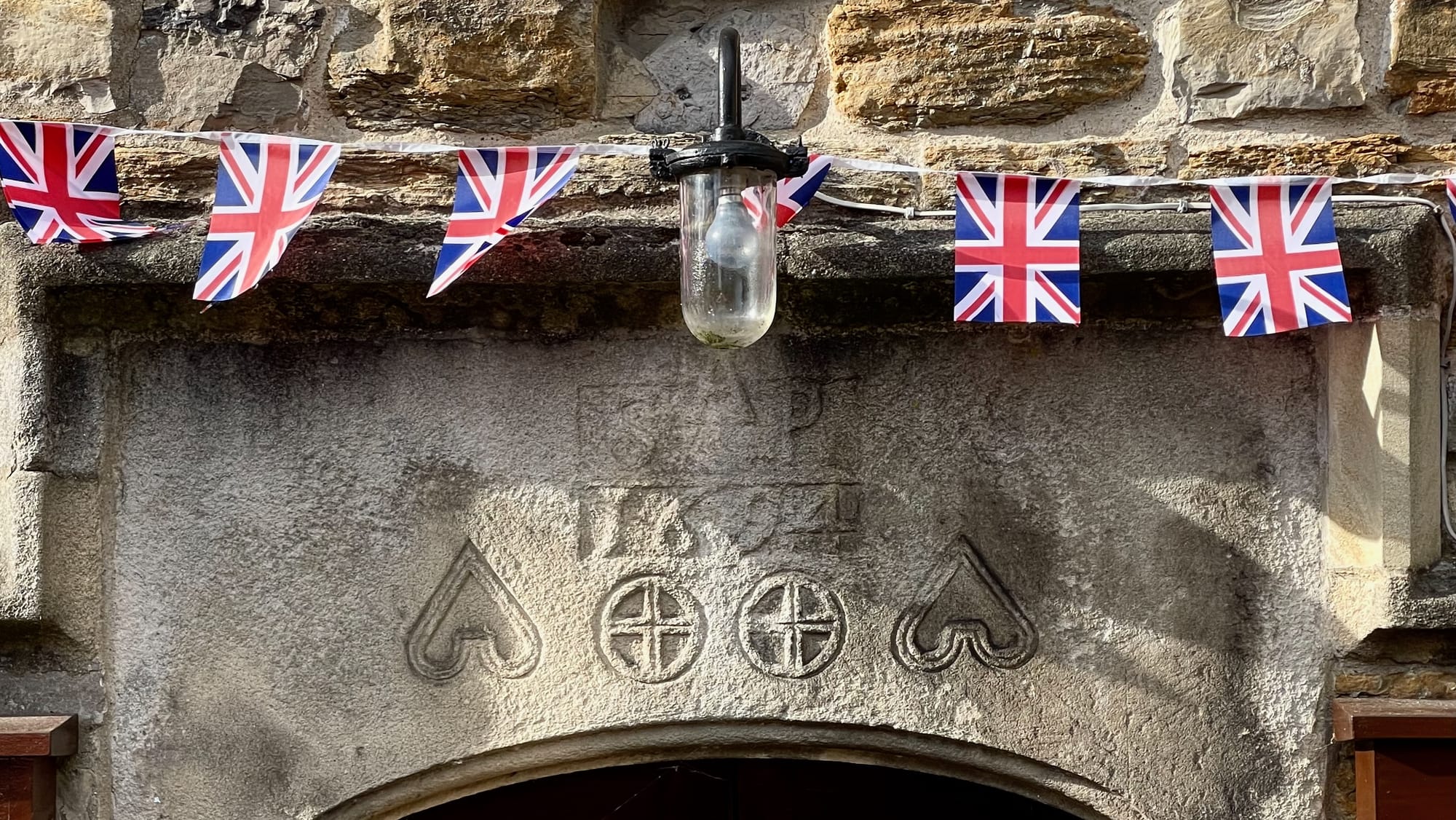
14 May 2022
Grassington
Faux Facades and Standing Stones.
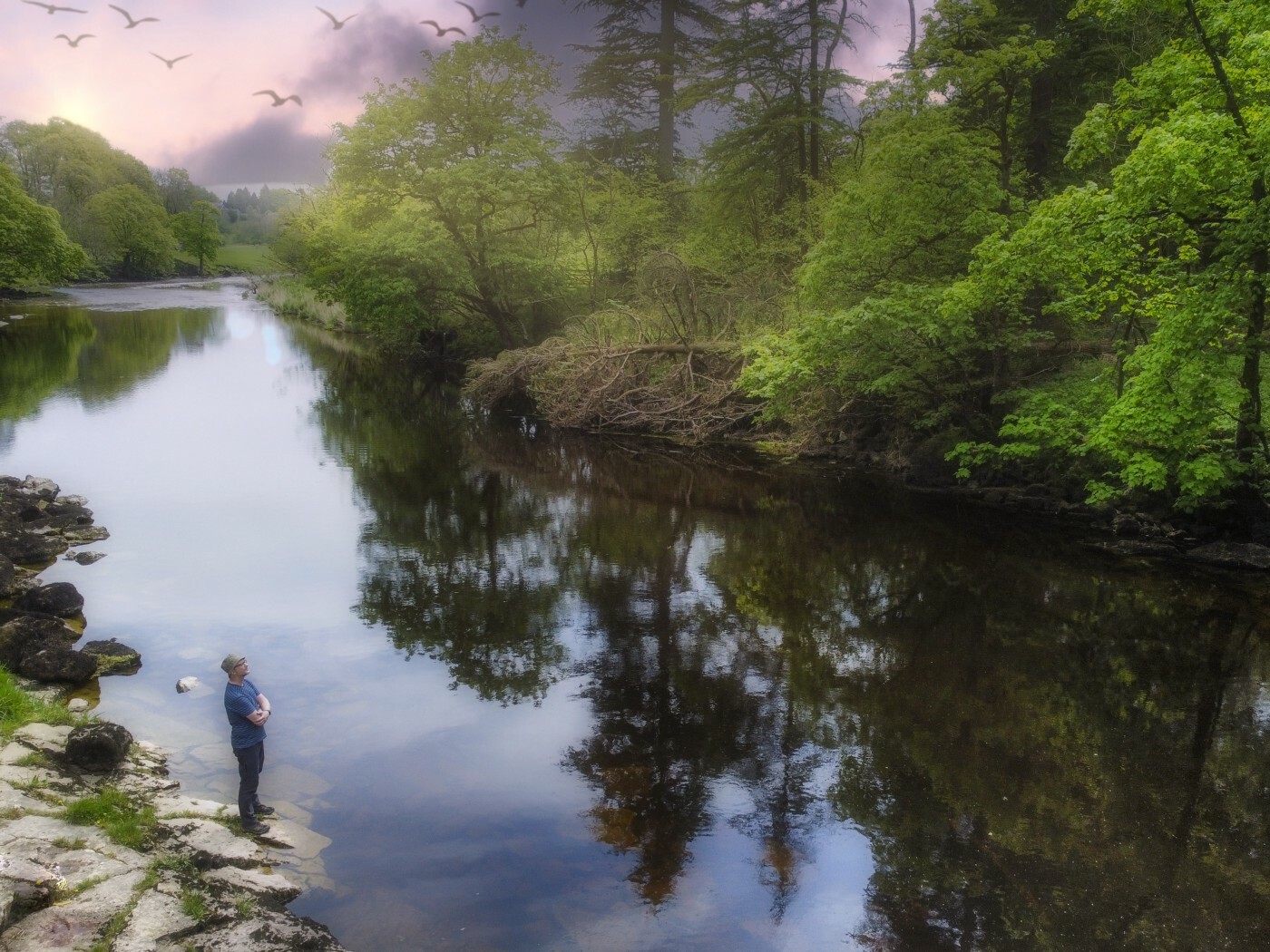
The forecast is good, so my wife, Charlotte and I decide to head up to a favourite spot in the Yorkshire Dales.
We arrive in Grassington first thing and walk from the car park up into the village centre. Our plan is to visit the bakery and buy sandwiches for lunch out on the walk. We stand outside the bakery and are instantly confounded. The bakery isn’t there. Neither is the gift shop or the post office. The Devonshire pub next door is now called The Drover’s Arms. I look at the buildings along the street - all the facades that we’ve come to know over the years have completely gone - erased. Behind me an ancient doorway has morphed into a Regency porch. The products in a window further down the road are priced at 3d. For a moment I think I’ve entered a time slip. All the while that we are standing and staring, neither of us says a word. We’ve been disconnected from what we thought we knew. It’s a surreal and angst inducing sensation. Nobody wants to be the first to let on.
"I look at the buildings along the street - all the facades that we’ve come to know over the years have completely gone - erased."
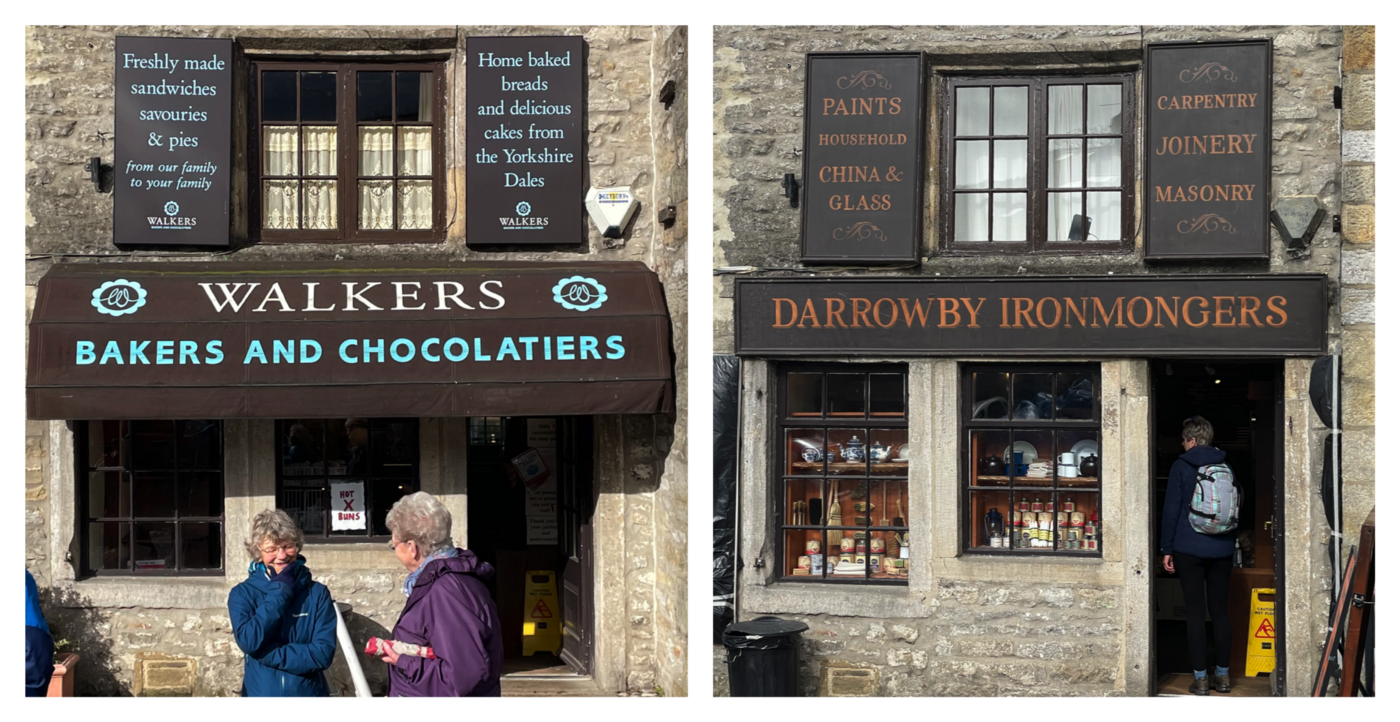
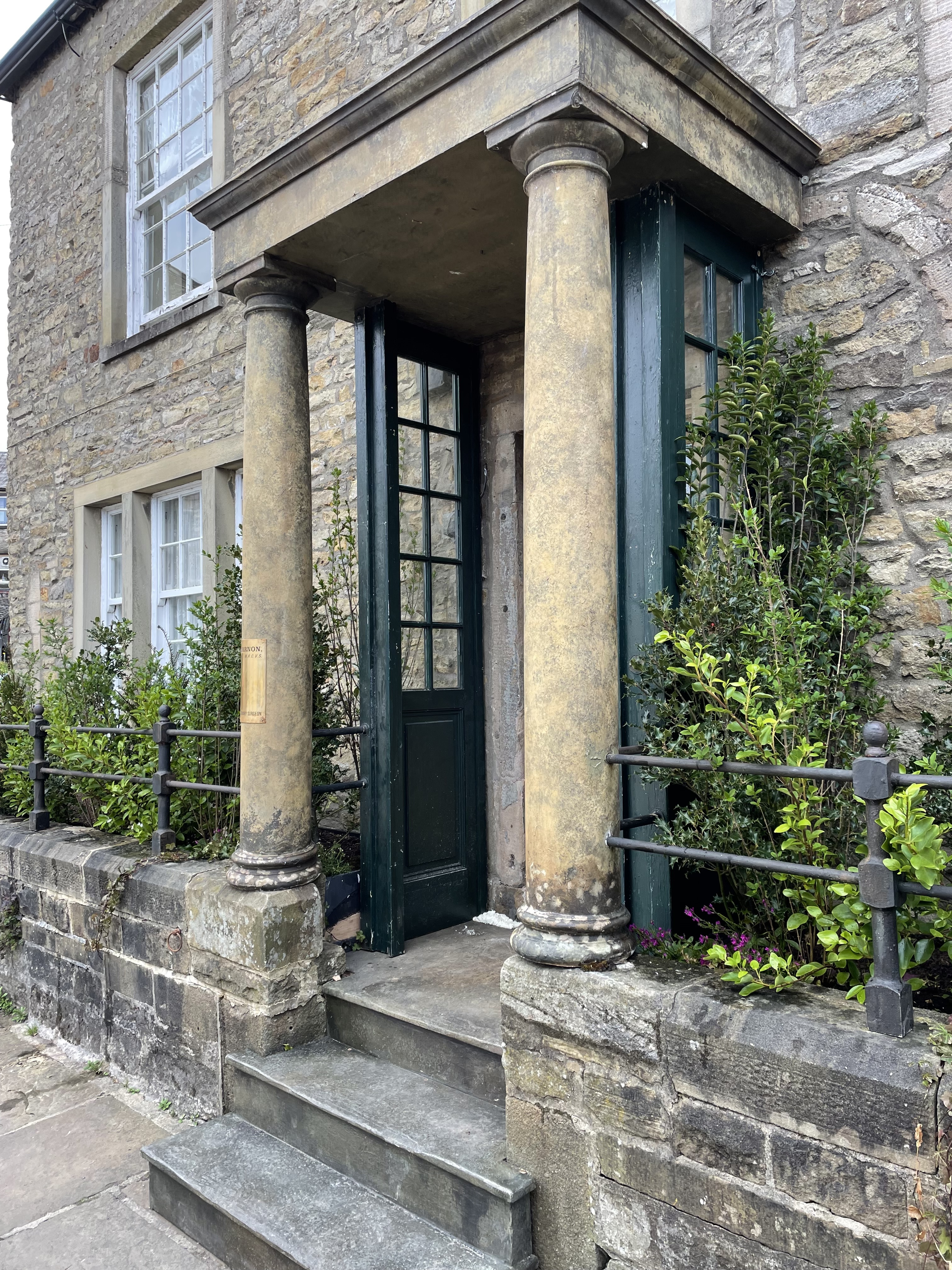
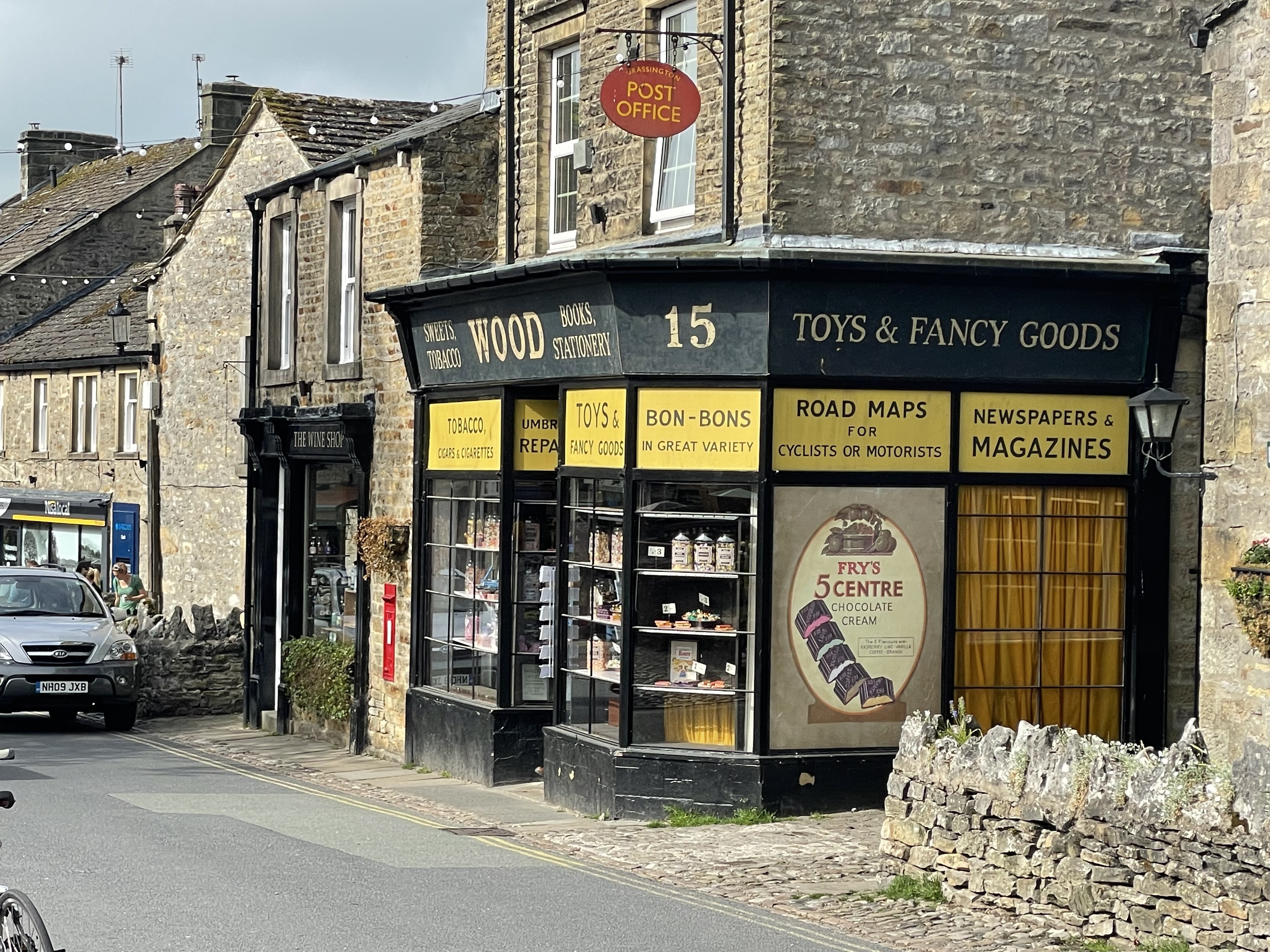


Then, a lifeline: through the door of the bakery-cum-Darrowby Ironmongers, I see pies.
“It’s for a TV series.” says a chap in a hi-vis vest stood behind me.
“They’re filming here on Tuesday, it's for All Creatures Great and Small. They’ve changed the shop fronts. All their props are beneath that tarp. “
I look at the pile at the centre of the market place. It’s covered in a blue tarpaulin. Spilling out from beneath it is the detritus of 1940’s England. It’s as if somebody has opened up a wormhole from WW2 Britain and chucked their belongings into the present day for safety.
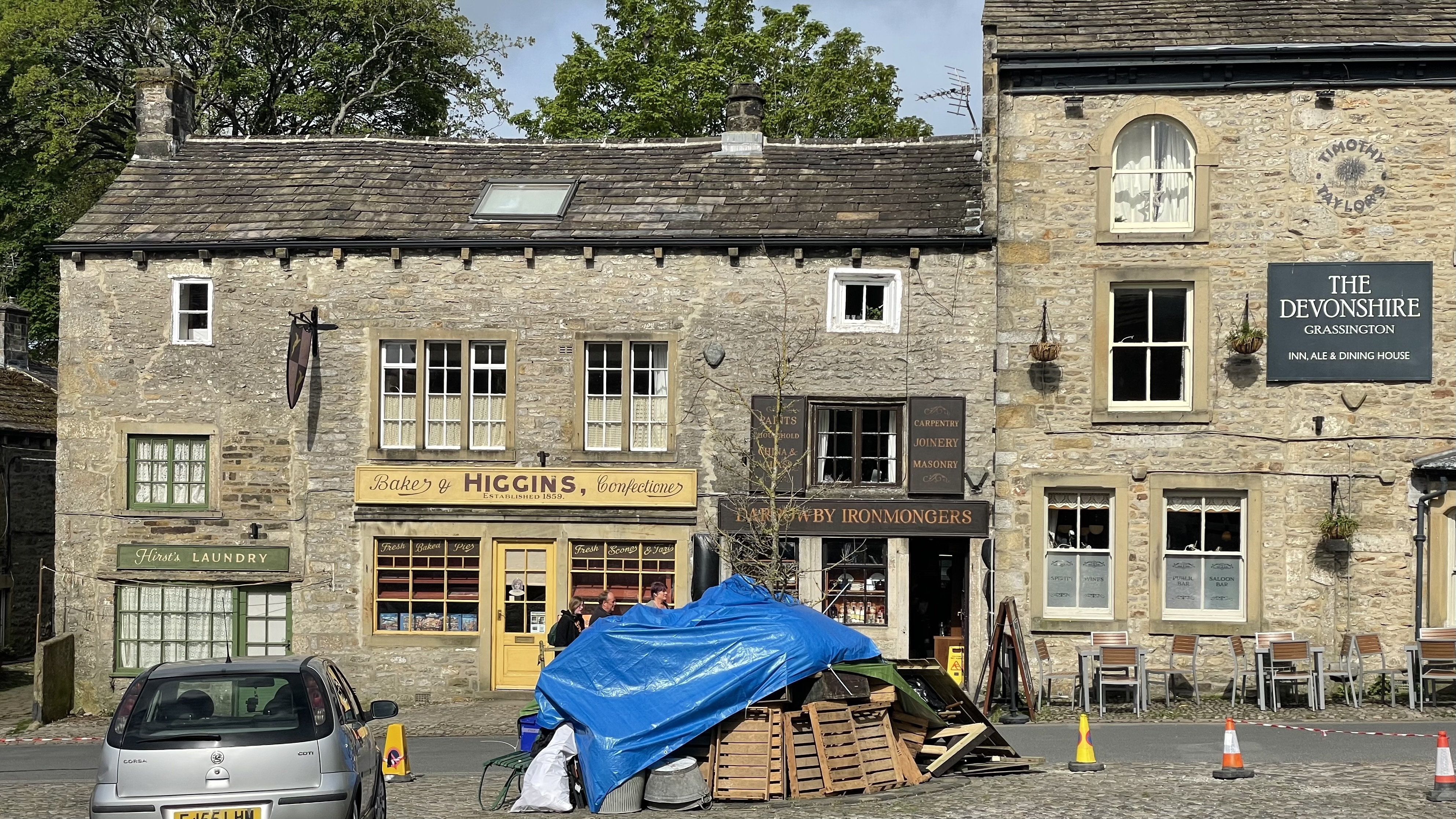
“It’s a time-hoard.” I think to myself as I spot Char walking out of the ironmongers with two cheese and tomato butties and a palpable sense of relief on her face.
We walk through the village on to Lea Green, a moor above Grassington, where we come across another stage set, but this time it’s on a grander scale and from a different period. We are walking through a karst landscape that’s infused with ritual. It isn’t obvious; if you don’t tune into it you’ll miss it.
I think of the aboriginal songlines in Australia: a series of pathways that run across the continent connecting elements in the landscape (called stops). Aboriginal people can sing themselves across the landscape without a map. The connecting stops (such as Uluru) are mnemonic data sets that hold information that’s sung into the present. This vast map of songlines presents itself like an organic computer - orchestrating movement, defining boundaries, encouraging a moral code and imparting lessons learned by previous generations. It’s a layering up of deep-rooted wisdom that is bound up in a loving stewardship of the natural environment.
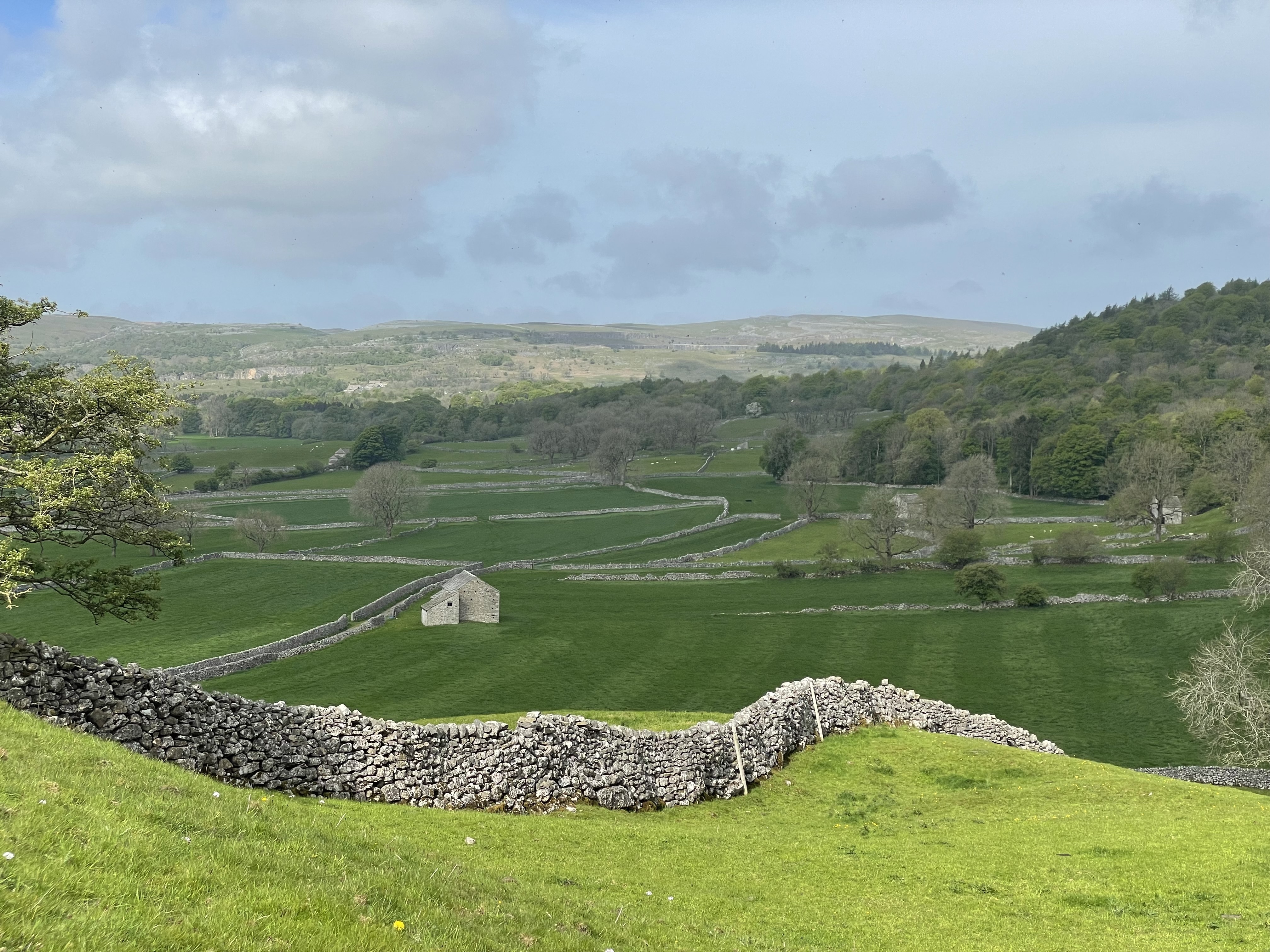
Here in the hills above Grassington there are prehistoric standing stones and burial mounds dotted around the moor. I climb on to a limestone pavement and try and connect the dots. They seem to line up with other stones which in turn define hollowed out ditches. I have an odd sensation - as if somebody is trying to tell me something. Like the aboriginal songlines, the landscape here is full of knowing, but this organic computer of stops and lines has been disconnected, lost in memory. The wisdom has gone.
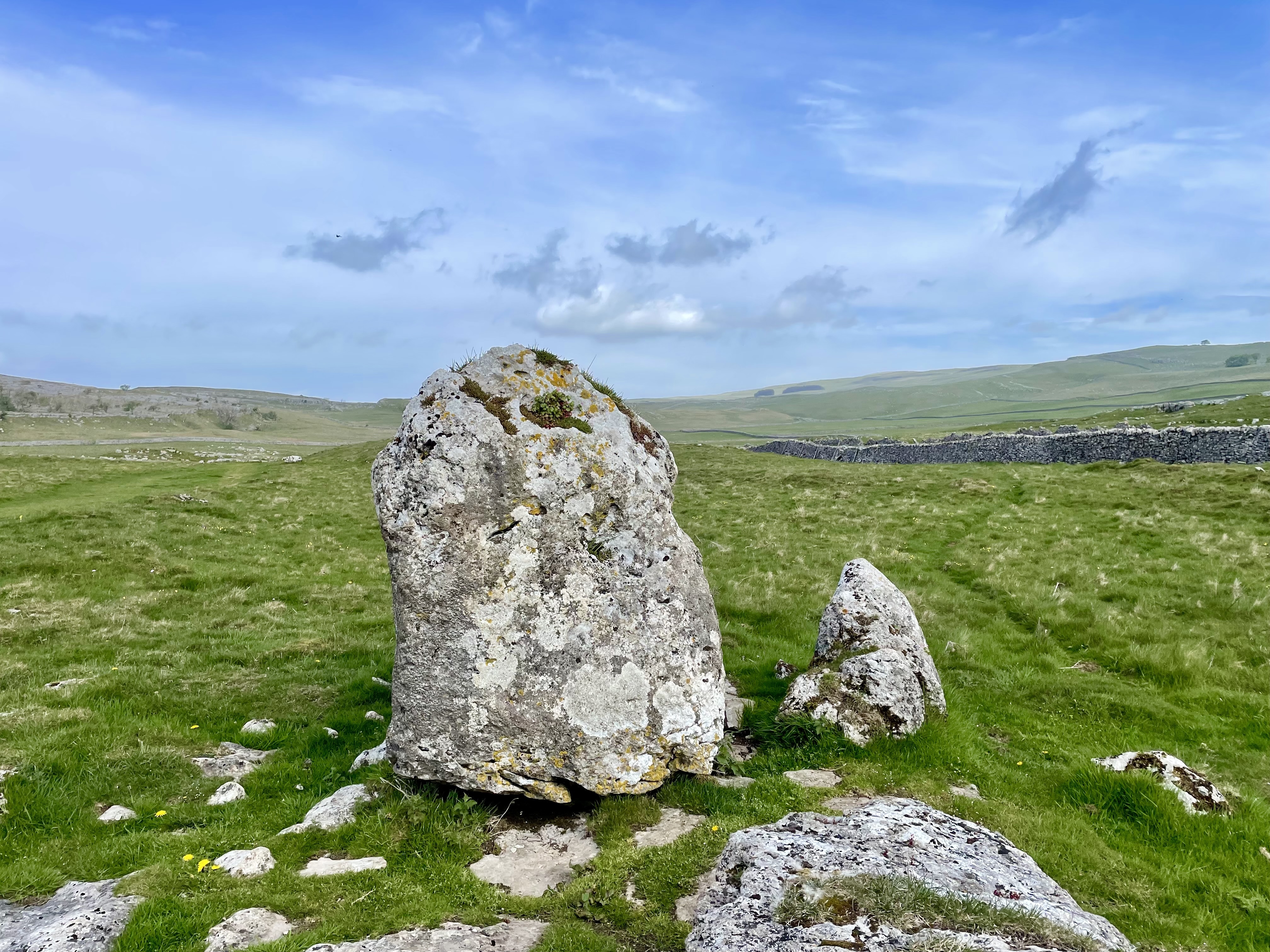
Further along our route, in Grass Wood, we come across a tree that’s dressed from crown to root in fungi. Something stirs within. The silhouette of the fungi-tree is an unusual countenance in the clearing. The fungi look like ears. The tree looks like it is listening. I fashion connections between trees like this and the green men carved in our churches. I carry its alchemy along the Wharfe with me.
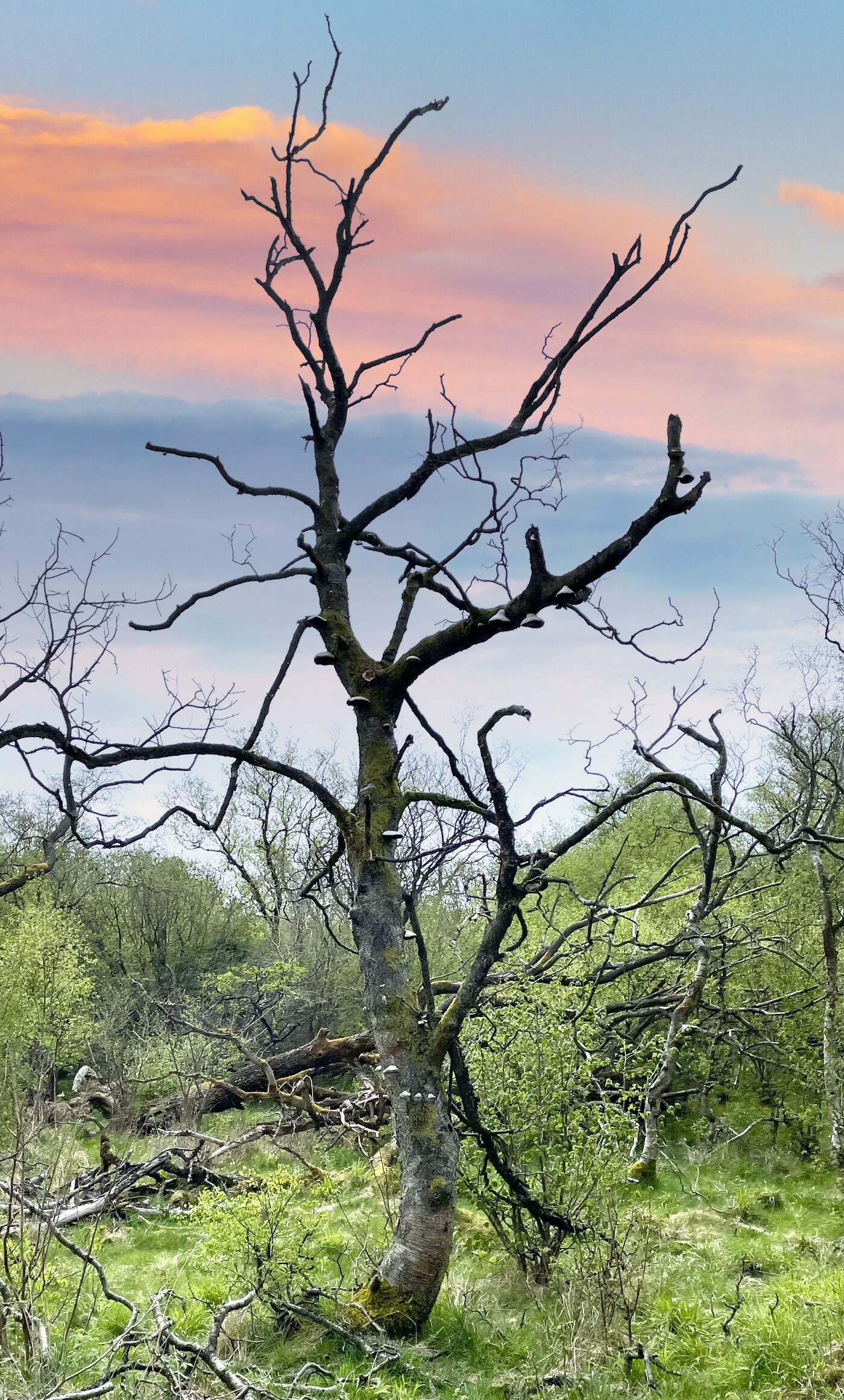
In our final mile we take in Ghaistrill’s Strid: a shallow run of water that loops through the limestone. Beside the gushing Wharfe the limestone is contoured with bowl shaped hollows of different sizes. They’ve been formed by erosion: an infinite spinning cycle of pebbles. They’re incredibly beautiful and remind me of crafted artisan bowls or mid-century modern sculptures. The smoothed out hollow is defined by the pebble and the pebble is defined by the hollow it smoothed out.
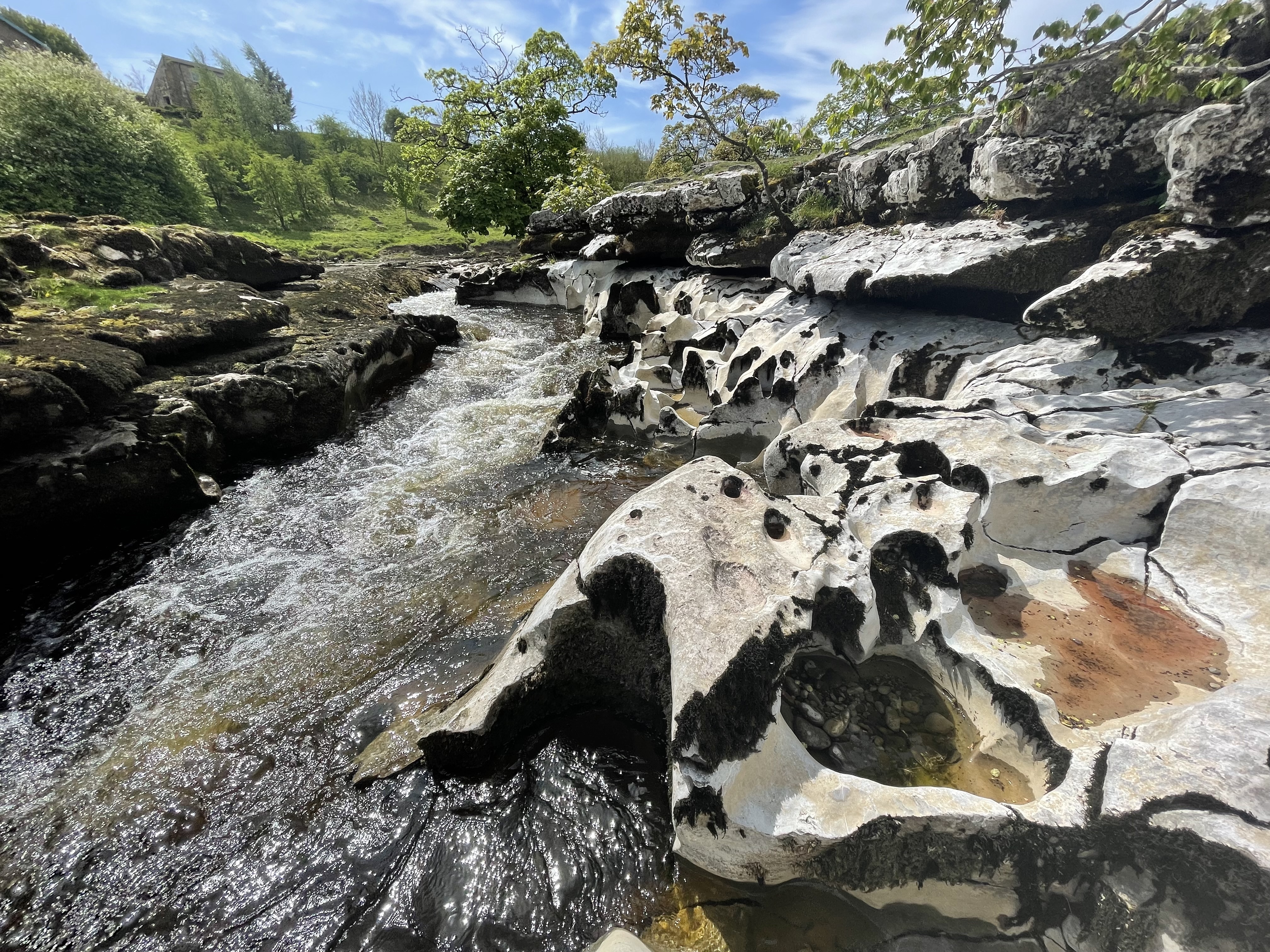
There’s a kind of intelligence in that infinite loop, but not of the human kind. It’s trying to tell us something. I see echo’s in the cup and ring marks found on rocks in places nearby. Perhaps somebody, a few thousand years ago, not much unlike me, felt the same jolt of wonder at the lesson in harmony passed on by the stones. It’s a lesson that sits well with scientific solutions for our own planet’s salvation. A portent from nature itself.
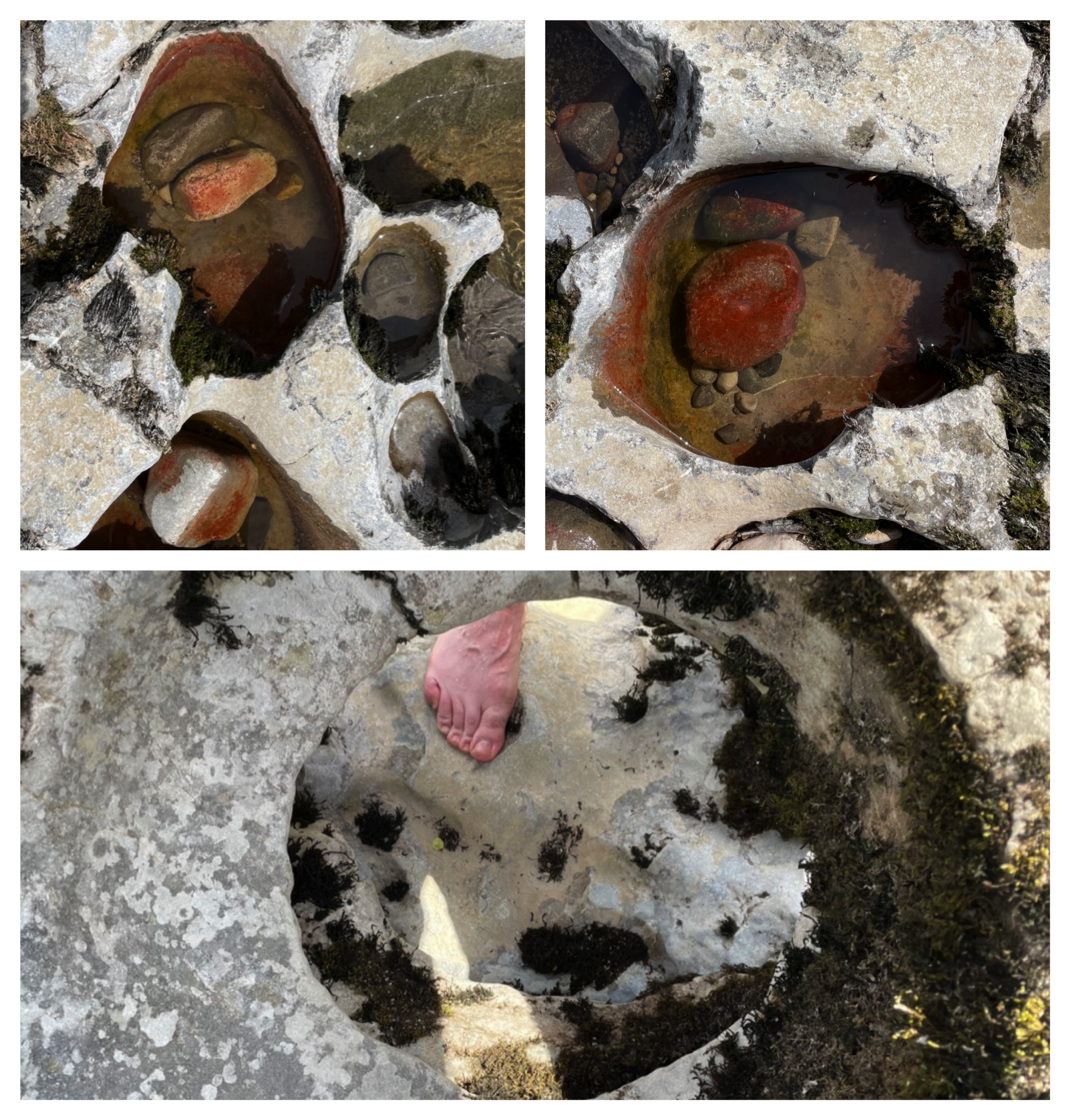
A tree that listens and a rock that tells.
I think of words by ecologist David Abrams: “....is the human intellect rooted in, and secretly borne by, our forgotten contact with the multiple nonhuman shapes that surround us?”
Abrams words bring on a thought that seems fanciful at first. Like the faux shop fronts at Grassington, it takes some time for the penny to drop. Perhaps the wisdom hasn’t been lost. Might it sit in places like the fungi-tree and the river bowl? Are the feelings these places stir within part of a body memory, a ghost imprint in our DNA, formed over millennia and incited by our relationship with our natural environment? Is this what the ancient stones on Lea Green are trying to say, and might they (and countless others in our indigenous landscapes) hold the secrets to our planet’s future?
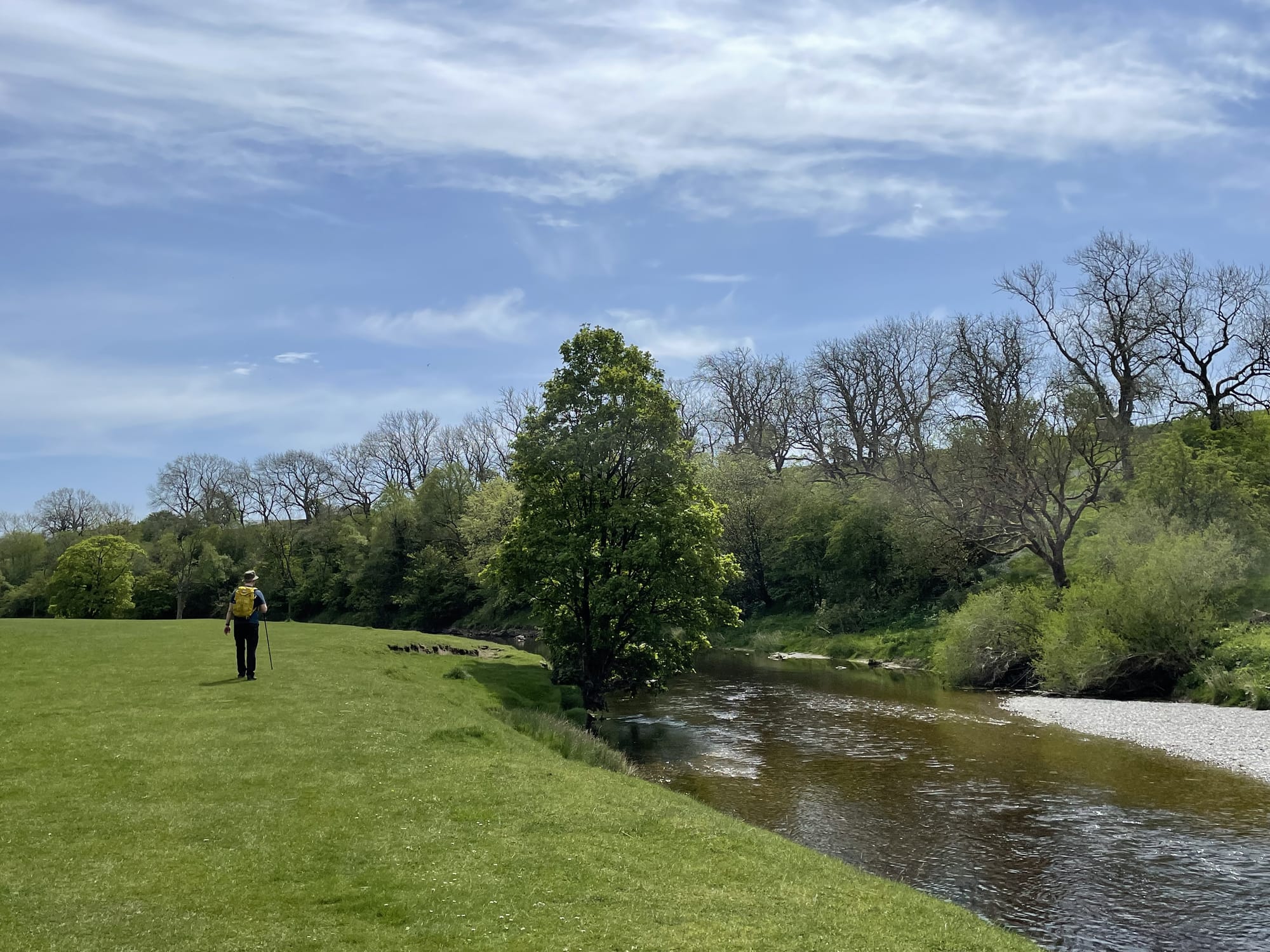
View next entry:
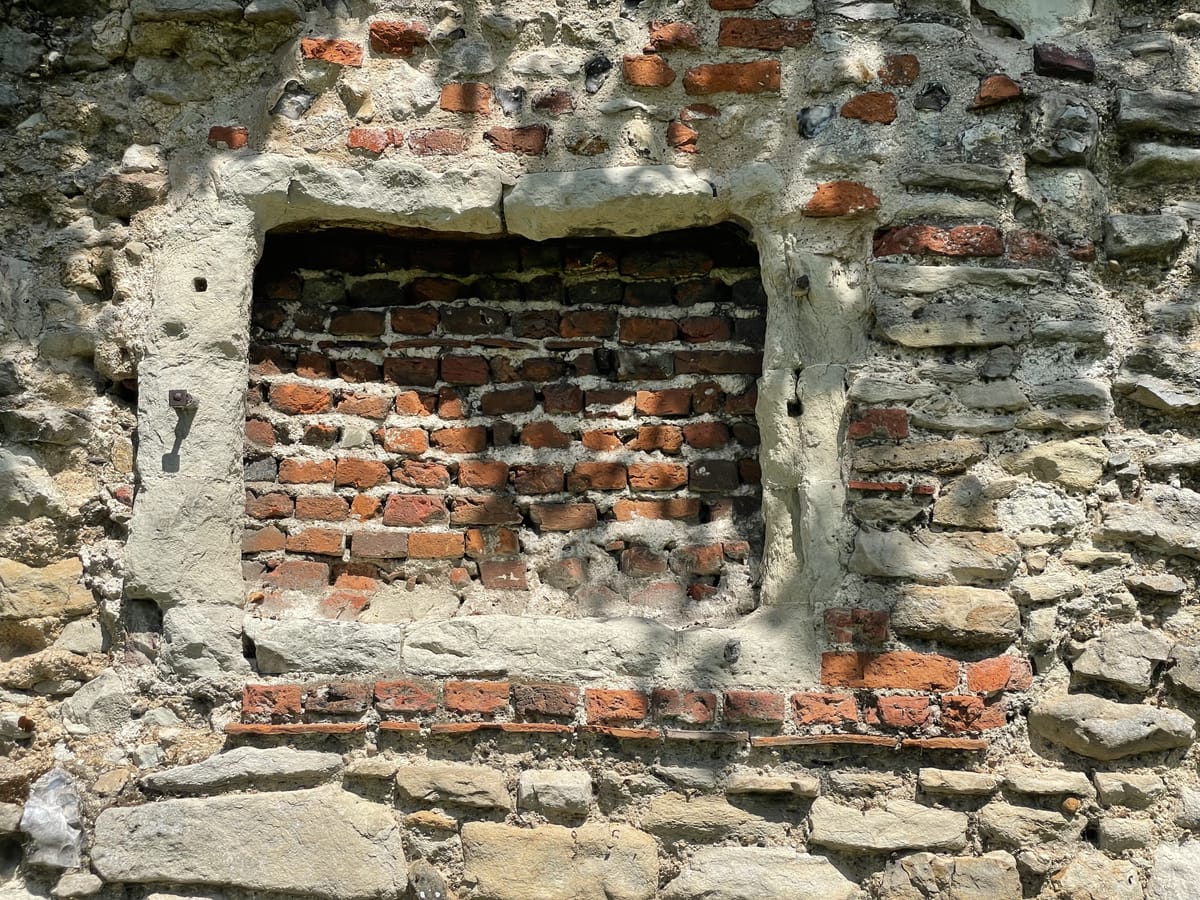
More about this Digest:
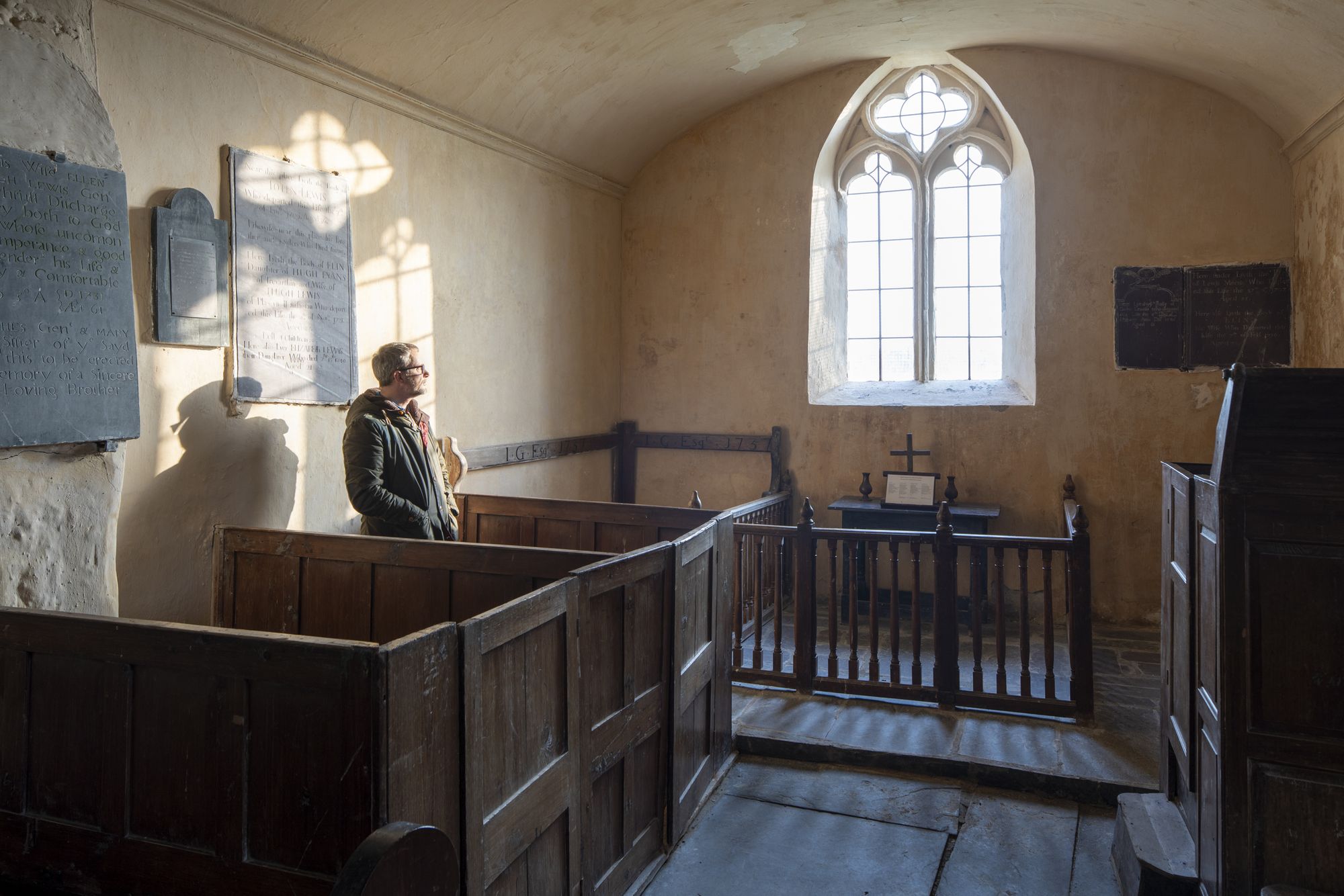

Can you help support me on my journey by becoming a Member?
Help keep Woody on the road and support the Genius Loci Digest.
Explore th Benefits





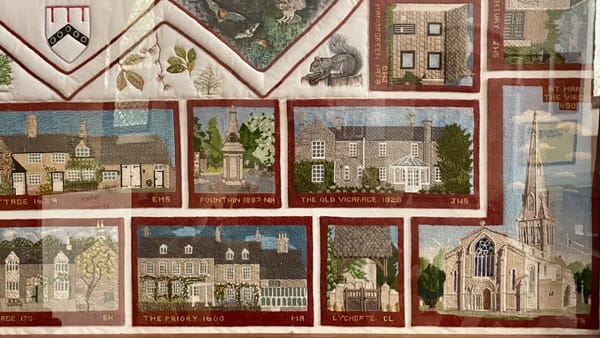

Member discussion